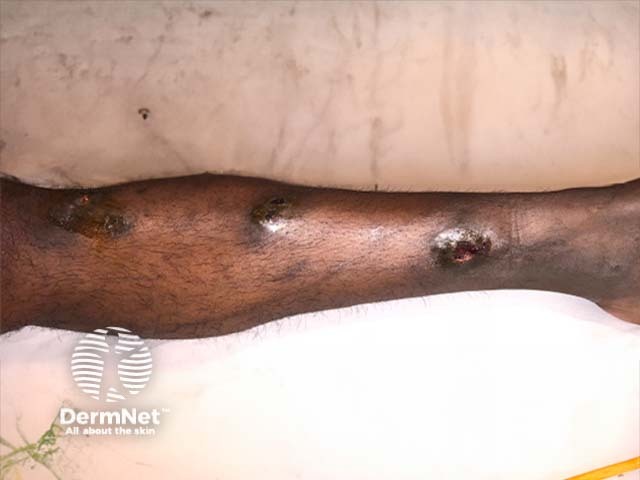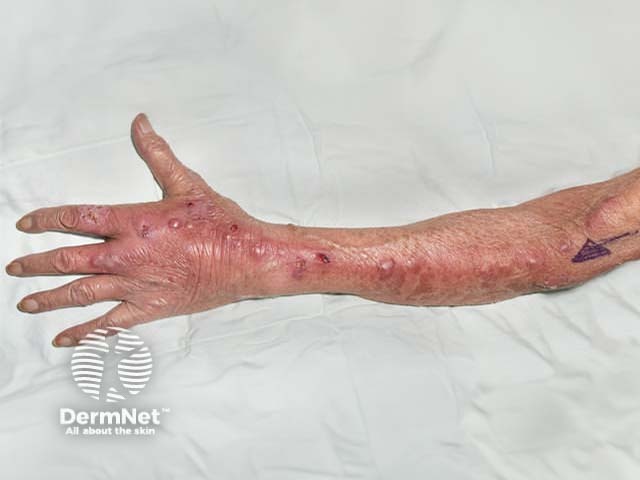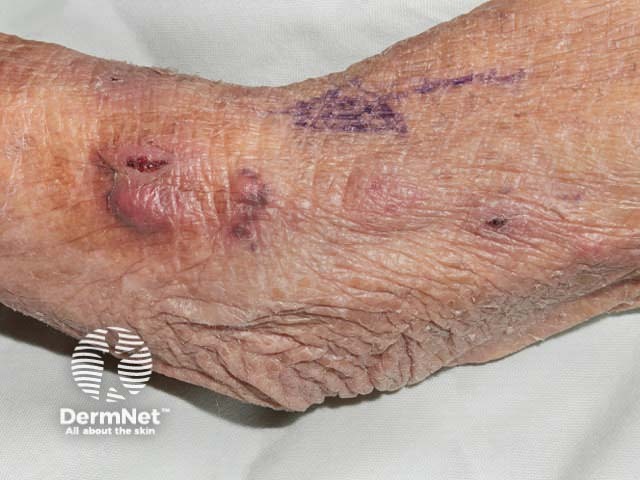Main menu
Common skin conditions

NEWS
Join DermNet PRO
Read more
Quick links
Author: A/Prof Amanda Oakley, Dermatologist, Hamilton, New Zealand, 2013.
Introduction Clinical features Causes Diagnosis Treatment Other conditions with sporotrichoid spread
Sporotrichoid lymphocutaneous infection is characterised by the appearance of subcutaneous nodules that progress along dermal and lymphatic vessels. It is also called nodular lymphangitis.
The clinical presentation is often described as sporotrichoid spread. The name 'sporotrichoid' is because the most common infection is sporotrichosis.

Deep fungal infection

Nocardia

Nocardia
Sporotrichoid spread is mostly observed on an upper limb. The first lesion starts distally, for example, on the hand, wrist or forearm. Subsequent lesions arise proximally, that is, further up the arm, in an irregular, roughly linear, distribution.
Each lesion is an inflamed, irregular, firm nodule, which may suppurate or ulcerate.
Sporotrichoid lymphocutaneous infection is usually due to an uncommon infection transmitted by primary inoculation through a minor injury or insect bite:
It has also been described with the following infections.
Although Staphylococcus aureus and Streptococcus pyogenes are very common causes of bacterial skin infection, they rarely result in sporotrichoid lymphocutaneous infection.
Accurate diagnosis requires identification of the causative organism. This may be undertaken by:
Treatment depends on the cause, so it is very important to identify the organism before starting a course of antibiotics or oral antifungal medicine. For example:
Lesions of cutaneous sarcoidosis are also occasionally noted to have sporotrichoid spread.
In-transit metastases are sometimes considered in the differential diagnosis of lymphocutaneous infection, where a secondary tumour – usually melanoma – arises in the skin between the excision site of the primary melanoma and its nearest lymph node.